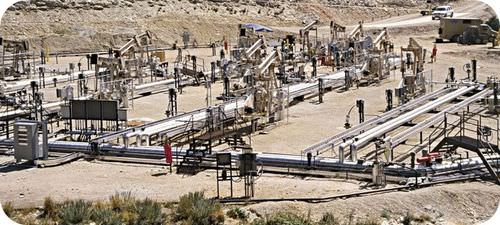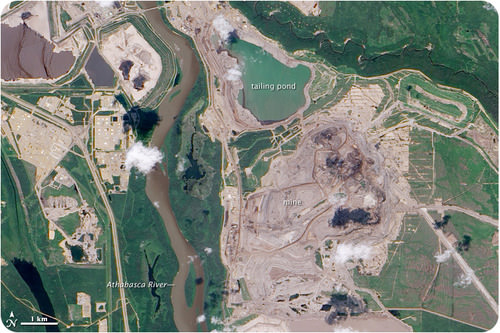20.10: Fossil Fuel Reserves
- Page ID
- 6081
\( \newcommand{\vecs}[1]{\overset { \scriptstyle \rightharpoonup} {\mathbf{#1}} } \)
\( \newcommand{\vecd}[1]{\overset{-\!-\!\rightharpoonup}{\vphantom{a}\smash {#1}}} \)
\( \newcommand{\dsum}{\displaystyle\sum\limits} \)
\( \newcommand{\dint}{\displaystyle\int\limits} \)
\( \newcommand{\dlim}{\displaystyle\lim\limits} \)
\( \newcommand{\id}{\mathrm{id}}\) \( \newcommand{\Span}{\mathrm{span}}\)
( \newcommand{\kernel}{\mathrm{null}\,}\) \( \newcommand{\range}{\mathrm{range}\,}\)
\( \newcommand{\RealPart}{\mathrm{Re}}\) \( \newcommand{\ImaginaryPart}{\mathrm{Im}}\)
\( \newcommand{\Argument}{\mathrm{Arg}}\) \( \newcommand{\norm}[1]{\| #1 \|}\)
\( \newcommand{\inner}[2]{\langle #1, #2 \rangle}\)
\( \newcommand{\Span}{\mathrm{span}}\)
\( \newcommand{\id}{\mathrm{id}}\)
\( \newcommand{\Span}{\mathrm{span}}\)
\( \newcommand{\kernel}{\mathrm{null}\,}\)
\( \newcommand{\range}{\mathrm{range}\,}\)
\( \newcommand{\RealPart}{\mathrm{Re}}\)
\( \newcommand{\ImaginaryPart}{\mathrm{Im}}\)
\( \newcommand{\Argument}{\mathrm{Arg}}\)
\( \newcommand{\norm}[1]{\| #1 \|}\)
\( \newcommand{\inner}[2]{\langle #1, #2 \rangle}\)
\( \newcommand{\Span}{\mathrm{span}}\) \( \newcommand{\AA}{\unicode[.8,0]{x212B}}\)
\( \newcommand{\vectorA}[1]{\vec{#1}} % arrow\)
\( \newcommand{\vectorAt}[1]{\vec{\text{#1}}} % arrow\)
\( \newcommand{\vectorB}[1]{\overset { \scriptstyle \rightharpoonup} {\mathbf{#1}} } \)
\( \newcommand{\vectorC}[1]{\textbf{#1}} \)
\( \newcommand{\vectorD}[1]{\overrightarrow{#1}} \)
\( \newcommand{\vectorDt}[1]{\overrightarrow{\text{#1}}} \)
\( \newcommand{\vectE}[1]{\overset{-\!-\!\rightharpoonup}{\vphantom{a}\smash{\mathbf {#1}}}} \)
\( \newcommand{\vecs}[1]{\overset { \scriptstyle \rightharpoonup} {\mathbf{#1}} } \)
\( \newcommand{\vecd}[1]{\overset{-\!-\!\rightharpoonup}{\vphantom{a}\smash {#1}}} \)
\(\newcommand{\avec}{\mathbf a}\) \(\newcommand{\bvec}{\mathbf b}\) \(\newcommand{\cvec}{\mathbf c}\) \(\newcommand{\dvec}{\mathbf d}\) \(\newcommand{\dtil}{\widetilde{\mathbf d}}\) \(\newcommand{\evec}{\mathbf e}\) \(\newcommand{\fvec}{\mathbf f}\) \(\newcommand{\nvec}{\mathbf n}\) \(\newcommand{\pvec}{\mathbf p}\) \(\newcommand{\qvec}{\mathbf q}\) \(\newcommand{\svec}{\mathbf s}\) \(\newcommand{\tvec}{\mathbf t}\) \(\newcommand{\uvec}{\mathbf u}\) \(\newcommand{\vvec}{\mathbf v}\) \(\newcommand{\wvec}{\mathbf w}\) \(\newcommand{\xvec}{\mathbf x}\) \(\newcommand{\yvec}{\mathbf y}\) \(\newcommand{\zvec}{\mathbf z}\) \(\newcommand{\rvec}{\mathbf r}\) \(\newcommand{\mvec}{\mathbf m}\) \(\newcommand{\zerovec}{\mathbf 0}\) \(\newcommand{\onevec}{\mathbf 1}\) \(\newcommand{\real}{\mathbb R}\) \(\newcommand{\twovec}[2]{\left[\begin{array}{r}#1 \\ #2 \end{array}\right]}\) \(\newcommand{\ctwovec}[2]{\left[\begin{array}{c}#1 \\ #2 \end{array}\right]}\) \(\newcommand{\threevec}[3]{\left[\begin{array}{r}#1 \\ #2 \\ #3 \end{array}\right]}\) \(\newcommand{\cthreevec}[3]{\left[\begin{array}{c}#1 \\ #2 \\ #3 \end{array}\right]}\) \(\newcommand{\fourvec}[4]{\left[\begin{array}{r}#1 \\ #2 \\ #3 \\ #4 \end{array}\right]}\) \(\newcommand{\cfourvec}[4]{\left[\begin{array}{c}#1 \\ #2 \\ #3 \\ #4 \end{array}\right]}\) \(\newcommand{\fivevec}[5]{\left[\begin{array}{r}#1 \\ #2 \\ #3 \\ #4 \\ #5 \\ \end{array}\right]}\) \(\newcommand{\cfivevec}[5]{\left[\begin{array}{c}#1 \\ #2 \\ #3 \\ #4 \\ #5 \\ \end{array}\right]}\) \(\newcommand{\mattwo}[4]{\left[\begin{array}{rr}#1 \amp #2 \\ #3 \amp #4 \\ \end{array}\right]}\) \(\newcommand{\laspan}[1]{\text{Span}\{#1\}}\) \(\newcommand{\bcal}{\cal B}\) \(\newcommand{\ccal}{\cal C}\) \(\newcommand{\scal}{\cal S}\) \(\newcommand{\wcal}{\cal W}\) \(\newcommand{\ecal}{\cal E}\) \(\newcommand{\coords}[2]{\left\{#1\right\}_{#2}}\) \(\newcommand{\gray}[1]{\color{gray}{#1}}\) \(\newcommand{\lgray}[1]{\color{lightgray}{#1}}\) \(\newcommand{\rank}{\operatorname{rank}}\) \(\newcommand{\row}{\text{Row}}\) \(\newcommand{\col}{\text{Col}}\) \(\renewcommand{\row}{\text{Row}}\) \(\newcommand{\nul}{\text{Nul}}\) \(\newcommand{\var}{\text{Var}}\) \(\newcommand{\corr}{\text{corr}}\) \(\newcommand{\len}[1]{\left|#1\right|}\) \(\newcommand{\bbar}{\overline{\bvec}}\) \(\newcommand{\bhat}{\widehat{\bvec}}\) \(\newcommand{\bperp}{\bvec^\perp}\) \(\newcommand{\xhat}{\widehat{\xvec}}\) \(\newcommand{\vhat}{\widehat{\vvec}}\) \(\newcommand{\uhat}{\widehat{\uvec}}\) \(\newcommand{\what}{\widehat{\wvec}}\) \(\newcommand{\Sighat}{\widehat{\Sigma}}\) \(\newcommand{\lt}{<}\) \(\newcommand{\gt}{>}\) \(\newcommand{\amp}{&}\) \(\definecolor{fillinmathshade}{gray}{0.9}\)Take a trip to Washington, D.C.?
People are always protesting in our nation's capital. That's part of liberty, part of democracy. The people in this photo are protesting the Keystone XL pipeline. Other people in other locations may be protesting for the pipeline. The Keystone Pipeline would bring crude oil from tar sands to the United States. People in favor say the oil from tar sands will bring down energy costs and provide jobs. People opposed say that the environmental consequences are not worth the benefits.
Alternative Fossil Fuels
Easy-to-reach fossil fuel sources are being used up. Technologies are being developed to get at harder-to-reach sources. Also, ways to tap into alternative sources of fossil fuels are increasingly being developed. These sources include oil shale and tar sands.
Oil Shale
Oil shale is rock with oil dispersed through it. The oil has not collected in reservoirs. Oil shale is mined in open pit mines. To extract the oil from the rock, the rock is first crushed and heated to very high temperatures. Water is washed over the rock, which converts the fuel to petroleum. The petroleum can then be extracted from the rock. You can see an example of an oil shale facility below (Figure below).
Most of the world's oil shale is spread out in large areas of Wyoming, Utah, and Colorado. In this region, water is scarce. Since the oil shale is spread over a large area, mining would be environmentally destructive.
An image of an oil shale facility in Colorado.
Tar Sands
Tar sands are rocky materials mixed with very thick oil. The tar is too thick to pump, and so tar sands are strip-mined. Hot water and caustic soda are used to separate the oil from the rock. This creates a slurry, which is shaken. The oil floats to the top and is skimmed off.
About 75% of the tar sands in the world are in Venezuela and Alberta, Canada (Figure below). Large areas of land are degraded when tar sands are mined. A tremendous amount of waste rock is produced from mining tar sands.
A satellite image of an oil-sands mine in Canada.
Consequences of Using Alternative Fossil Fuels
Surface mining causes environmental damage. A lot of water may be needed. The water may be degraded. For oil to be removed from shale, the water must be heated. This requires energy. Tar sands and oil shale fuels create more pollutants than other fossil fuels. Extracting usable energy from oil shale and tar sands produces more greenhouse gases.
Keystone XL Pipeline
The Keystone XL Pipeline would transport oil from the oil sands in Alberta, Canada. The oil would travel into the United States. In the U.S. it would be refined. The pipeline is controversial. A leak could cause damage to wildlife habitat. A leak could also release enough oil to contaminate the Ogallala Aquifer. The Aquifer is crucial to agriculture and urban development in the Midwestern U.S. When burned, the fuel from the oil sands would increase pollutants. Greenhouse gases into the atmosphere would increase. The future of the pipeline is currently on hold.
Summary
- Easy to get at fossil fuels are running out, but there are other sources that are harder to get at that are still available.
- Oil shales and tar sands are two of the alternative sources of fossil fuels that are much in the news.
- The need for fossil fuels continues to grow as people in the developed world use more, and more people in the developing world want them.
Review
- What are oil shales? How is oil extracted from them?
- What are tar sands? How is oil extracted from them?
- What are the environmental hazards of using these two fuel sources?
Explore More
Use the resource below to answer the questions that follow.
- How much oil from oil shale is there in the United States?
- How much oil shale is there compared with the rest of the world?
- How does the amount of oil in oil shale in the U.S. compare with proven oil reserves in the Middle East?
- Where is the Green River Formation? Why are scientists interested in this formation?
- What is oil shale? What form is the oil in?




